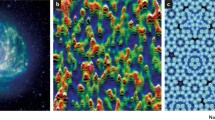Abstract
The structure and function of the myocardial microvasculature affect cardiac performance. Quantitative assessment of microvascular changes is therefore crucial to understanding heart disease. This paper proposes the use of 3D fractal-based measures to obtain quantitative insight into the changes of the microvasculature in infarcted and non-infarcted (remote) areas, at different time-points, following myocardial infarction. We used thick slices (~100μm) of pig heart tissue, stained for blood vessels and imaged with high resolution microscope. Firstly, the cardiac microvasculature was segmented using a novel 3D multi-scale multi-thresholding approach. We subsequently calculated: i) fractal dimension to assess the complexity of the microvasculature; ii) lacunarity to assess its spatial organization; and iii) succolarity to provide an estimation of the microcirculation flow. The measures were used for statistical change analysis and classification of the distinct vascular patterns in infarcted and remote areas, demonstrating the potential of the approach to extract quantitative knowledge about infarction-related alterations.
This research is funded by the European Commission (FP7-PEOPLE-2013-ITN ‘CardioNext’, No. 608027) and La Marató de TV3 Foundation. CNIC is supported by the MINECO and the Pro-CNIC Foundation. Kerri-Ann Norton is funded by the American Cancer Society Postdoctoral Fellowship. The authors would like to thank Jaume Agüero for performing the infarction in the pigs.
Chapter PDF
Similar content being viewed by others
Keywords
- Fractal Dimension
- Remote Area
- Post Myocardial Infarction
- Microvascular Coronary Dysfunction
- High Resolution Microscope
These keywords were added by machine and not by the authors. This process is experimental and the keywords may be updated as the learning algorithm improves.
References
Allain, C., Cloitre, M.: Characterising the lacunarity of random and deterministic fractal sets. Phys. Rev. Lett. 44, 3552–3558 (1991)
Berntson, G.M., Stoll, P.: Correcting for Finite Spatial Scales of Self-Similarity When Calculating Fractal Dimensions of Real-World Structures. Proceedings of the Royal Society B: Biological Sciences 264(1387), 1531–1537 (1997)
Block, A., von Bloh, W., Schellnhuber, H.J.: Efficient box-counting determination of generalized Fractal Dimensions. Physical Review A 42, 1869–1874 (1990)
Buades, A., Coll, B., Morel, J.-M.: A non-local algorithm for image denoising. In: CVPR (2), pp. 60–65 (2005)
Dougherty, G., Henebry, G.M.: Fractal signature and lacunarity in the measurement of the texture of trabecular bone in clinical CT images. Med. Eng. Phys. 23(6), 369–380 (2001)
Fernández-Jiménez, R., Sánchez-González, J., Agüero, J., et al.: Myocardial Edema After Ischemia/Reperfusion Is Not Stable and Follows a Bimodal Pattern: Imaging and Histological Tissue Characterization. J. Am. Coll. Cardiol. 65(4), 315–323 (2015)
Gould, D.J., Vadakkan, T.J., Poché, R.A., Dickinson, M.E.: Multifractal and Lacunarity Analysis of Microvascular Morphology and Remodeling. Microcirculation 18(2), 136–151 (2011)
Lopes, R., Betrouni, N.: Fractal and multifractal analysis: a review. Med. Image Anal. 13(4), 634–649 (2009)
Lorthois, S., Cassot, F.: Fractal analysis of vascular networks: insights from morphogenesis. J. Theor. Biol. 262(4), 614–633 (2010)
Mandelbrot, B.B.: Fractal geometry of nature. Freeman, New York (1977)
Melo, R.H.C., Conci, A.: How Succolarity could be used as another fractal measure in image analysis. Telecommunication Systems 52(3), 1643–1655 (2013)
Otsu, N.: A Threshold Selection Method from Gray-Level Histograms. IEEE Transactions on Systems, Man, and Cybernetics 9(1), 62–66 (1979)
Pawley, J.B.: Handbook of Biological Confocal Microscopy. Springer (2006)
Petersen, J.W., Pepine, C.J.: Microvascular coronary dysfunction and ischemic heart disease: Where are we in 2014? Trends Cardiovasc. Med. 25(2), 98–103 (2015)
Ren, G., Michael, L.H., Entman, M.L., Frangogiannis, N.G.: Morphological characteristics of the microvasculature in healing myocardial infarcts. J. Histochem. Cytochem. 50(1), 71–79 (2002)
Weaver, M.E., Pantely, G.A., Bristow, J.D., Ladley, H.D.: A quantitative study of the anatomy and distribution of coronary arteries in swine in comparison with other animals and man. Cardiovasc. Res. 20(12), 907–917 (1986)
Wu, X., Kumar, V., Quinlan, J.R., et al.: Top 10 algorithms in data mining. Knowledge and Information Systems 14(1), 1–37 (2008)
Author information
Authors and Affiliations
Editor information
Editors and Affiliations
Rights and permissions
Copyright information
© 2015 Springer International Publishing Switzerland
About this paper
Cite this paper
Gkontra, P., Żak, M.M., Norton, KA., Santos, A., Popel, A.S., Arroyo, A.G. (2015). A 3D Fractal-Based Approach towards Understanding Changes in the Infarcted Heart Microvasculature. In: Navab, N., Hornegger, J., Wells, W., Frangi, A. (eds) Medical Image Computing and Computer-Assisted Intervention – MICCAI 2015. MICCAI 2015. Lecture Notes in Computer Science(), vol 9351. Springer, Cham. https://doi.org/10.1007/978-3-319-24574-4_21
Download citation
DOI: https://doi.org/10.1007/978-3-319-24574-4_21
Published:
Publisher Name: Springer, Cham
Print ISBN: 978-3-319-24573-7
Online ISBN: 978-3-319-24574-4
eBook Packages: Computer ScienceComputer Science (R0)




